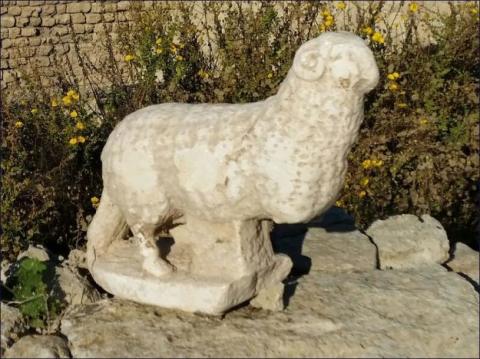Ancient ram statue discovered at Caesarea
The ram statue might have been part of the decoration of the Byzantine church near which it was discovered. The church dates back to 6-7AD and this may correspond to the dating of the marble statute, they said.
However, they did not rule out the possibility of it belonging to an early Roman era. "It [the ram statue] could also be earlier, from the Roman period, and was incorporated in secondary use in the church structure," the archaeologists added.
The archaeologists said the statue was particularly significant because of its representation in various ancient legends and works of art. In Egyptian mythology, the animal represents the ancient god Amun. In Roman art, the sheep often appears alongside the Greek gods Hermes and Mercury, they noted.
In Christian art, Jesus is portrayed as the shepherd tending his flock with a ram in his arms or on his shoulders in most instances. "In Christianity the ram, like the lamb, represents the faithful, or Jesus himself, whose anguish and death were meant according to Christian belief to atone for original sin," the ministry statement said.
Sanskrity Sinha

